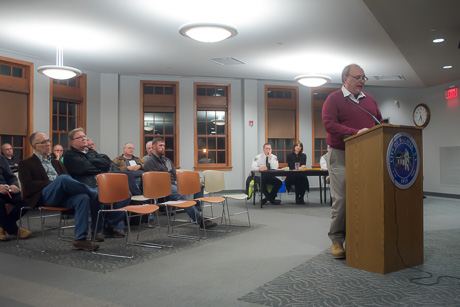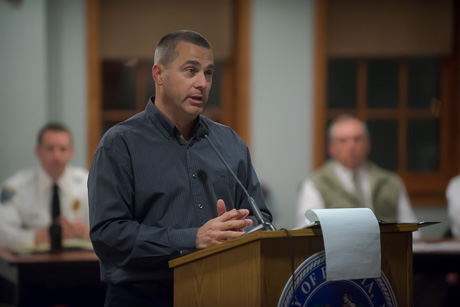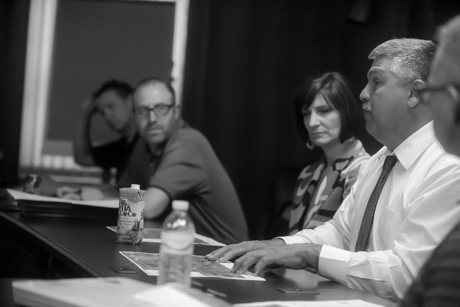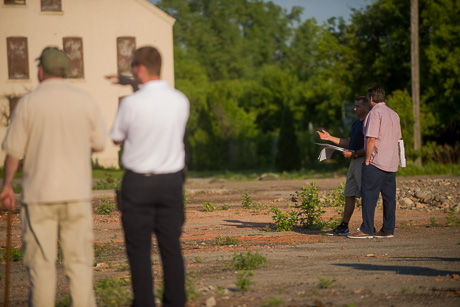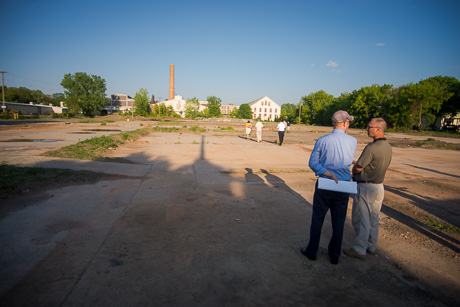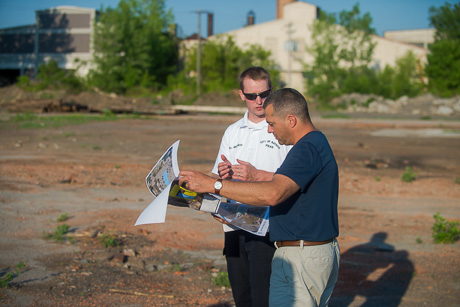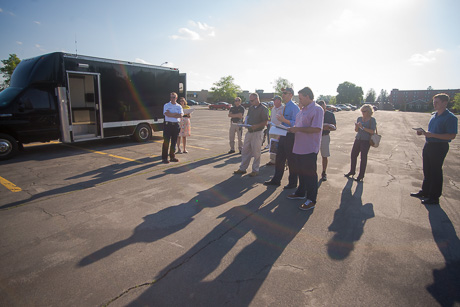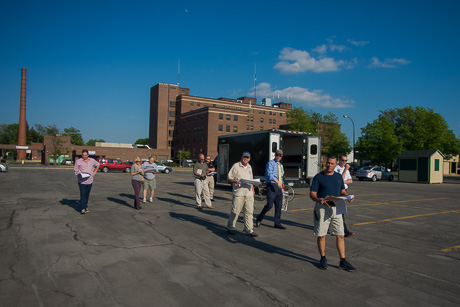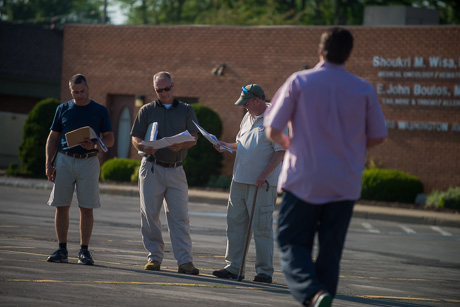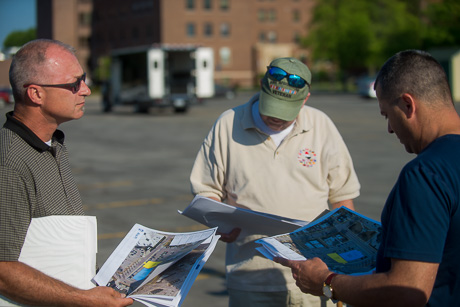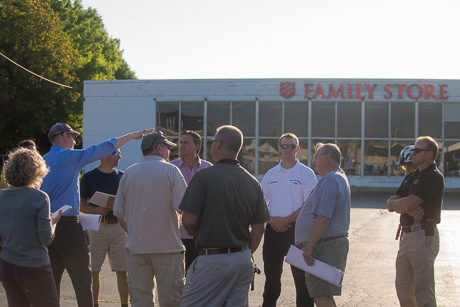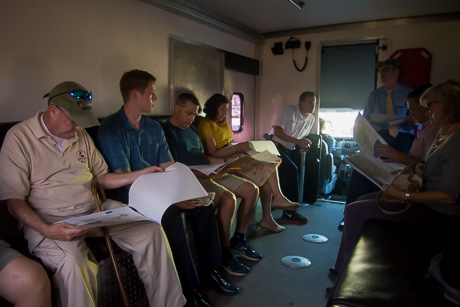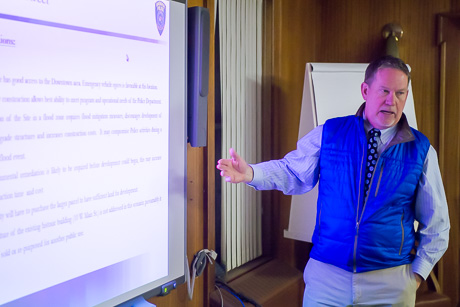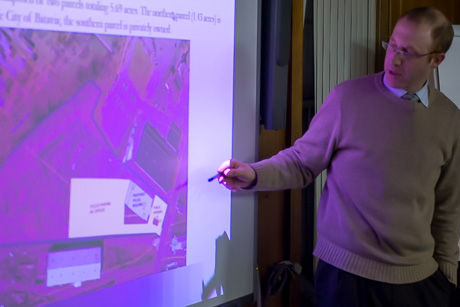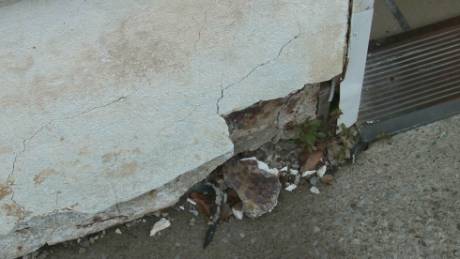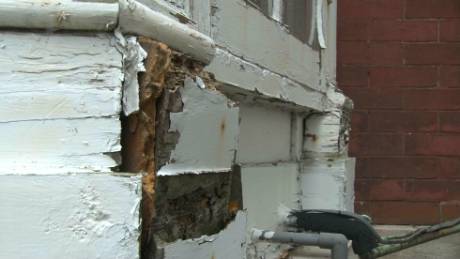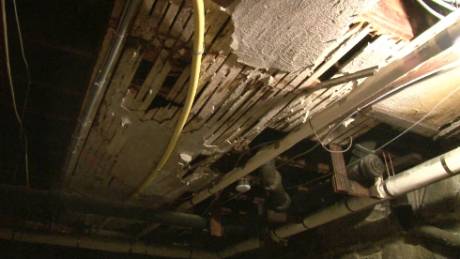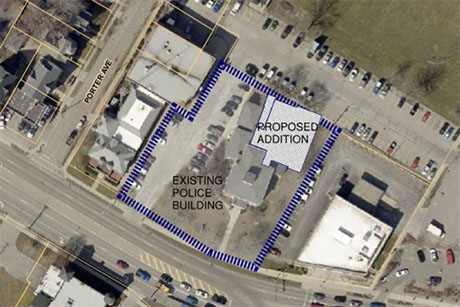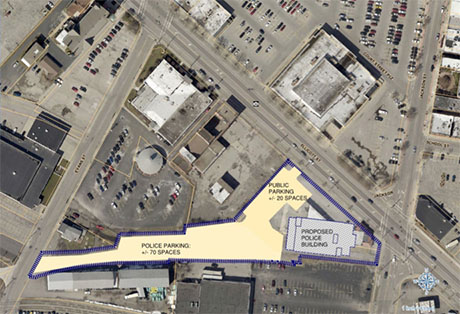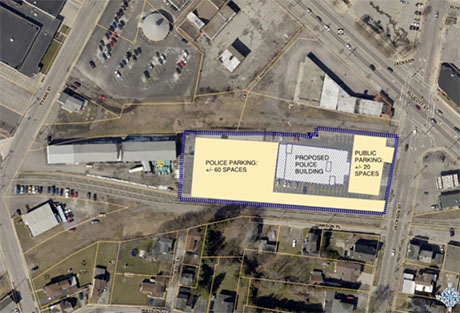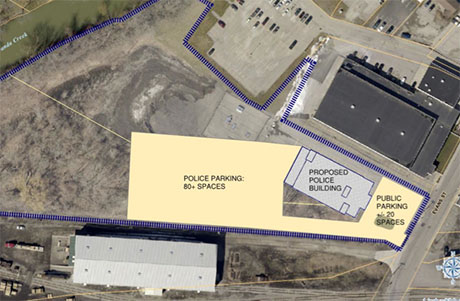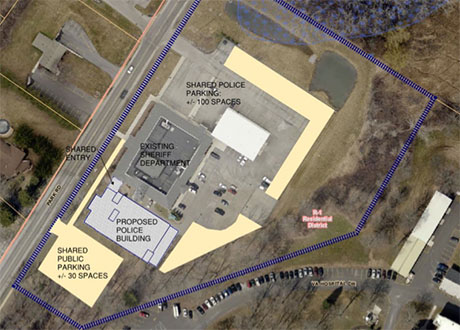City Council takes up again issue of what to do with 150-year-old house converted to police station
For at least five years the City of Batavia has been trying to figure out what to do about its aging, deteriorating, ill-suited police headquarters and Monday night the topic was once again on the City Council agenda.
Consultant John Brice, of Geddis Architects, presented the council with three broad options, with price tags in excess of $7 million up to nearly $10 million, and each with their own challenges and pitfalls, not the least of which is the time it will take to complete whichever option is chosen.
Option 1: Remodel the existing headquarters with a public entrance in the back, using all existing floors, without too many significant changes to the floor plan.
Option 2: Remodel the existing headquarters with a public entrance in the front, all police operations confined to the basement and the first floor, the addition of an enclosed sally port and separate entrance in the back of the building for police officers and detained subjects.
Option 3: Build a new police headquarters on a parcel of land yet to be determined.
In 2014, the City formed a task force to study options for a new police headquarters. The task force considered options for remodeling the current location and reviewed a half dozen parcels in the city for a possible new building. The task force favored a location on Swan Street but the city was apparently unable to acquire the property.
The issue languished until now.
The two remodeling options presented last night were revised from proposals presented in 2014 and the new building plan was a generic layout for a single-story building that would likely change based on the configuration of any parcel of land eventually selected for the building.
Both council members Kathy Briggs and Patti Pacino said it's time to stop stalling, so they favored Option 2 as the seemingly most expedient while also most completely addressing problems with the current headquarters.
"We need to stop kicking the can down the road," Pacino said.
"That's right," Briggs said.
She expressed concern that while it might be nice to build new, the city has already been down the path of trying to find an appropriate location and didn't really find a suitable spot.
Eugene Jankowski, council president, said he was open to Option 2 but favored option 3, building new.
"The first option doesn't do much," Jankowski said. "It might save us a little money but it doesn't solve any issues."
The current police headquarters was built 150 years ago as a mansion for one of Batavia's well-to-do families, the Brisbanes (James Brisbane was one of the founders of Batavia. His son, Albert Brisbane, was a nationally known utopian in the 19th century, and one of his sons, Arthur Brisbane (who married a Cary, another of Batavia's early wealthy families) went on to become one of the nation's most famous newspaper editors, working for William Randolph Hearst in the late 19th and early 20th centuries, and is buried in Batavia.)
The Brisbane mansion eventually became City Hall. When City Centre was built, Batavia PD became sole occupants of the building.
Brice outlined the problems with the Brisbane Mansion: The building's heating, air conditioning, plumbing and electrical are out of date and in need of replacement; its public entrance is up a flight of stairs and doesn't offer good visibility for staff inside; the entrance is less than ideally secure because there is no separate entrance for officers and any detainees they bring in; the building is not compliant with the Americans with Disabilities Act.
"As soon as you touch any of the major systems you must make the building ADA compliant," Brice said. "That's New York State law."
Option 1 doesn't address all those issues. While it would upgrade HVAC, electrical and plumbing, and provide a more visible public entrance but the entrance would still be shared by the general public, police, and criminal suspects. It doesn't provide separate parking for police vehicles and public vehicles. It addresses ADA issues but the elevator would need to do more than just stop on three different floors; it would need to be able to stop on the levels in between floors (the second floor is really five different levels).
The total estimated cost for Option 1 is $6.9 million.
Option 2 puts the public entrance at the front of the building and adds a sally port at the back for safe prisoner transport and storage of the department's emergency response vehicle. It puts all police operations in the basement and on the first floor and leaves the second floor vacant (though the new elevator would still go to the second floor). It addresses many of the safety issues and upgrade issues with the building, but it's still a 150-year-old building originally built as a residence.
The estimated cost is more than $9 million.
Option 3 addresses all of the logistical and safety issues that can't be fixed with a remodel of the existing building but the biggest issue is: where to put it?
The estimated cost is close to $10 million.
"The facility we’re in now is 150 years old," said Chief Shawn Heubusch. "It’s still going to be 150 years old no matter what we do to it. It was not purpose-built as a police station or as a government facility. It’s purpose-built as a residence. It’s been modified over the years but a new build covers all of the requirements we have."

